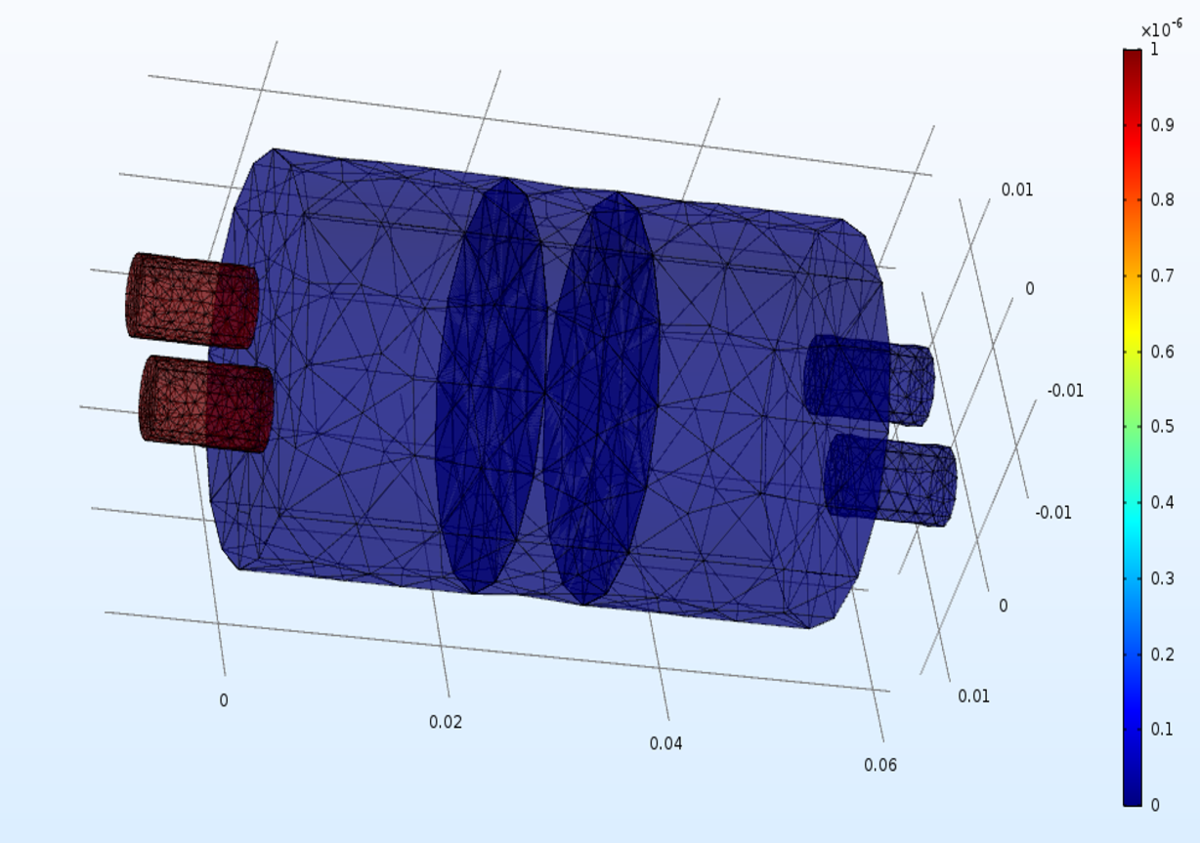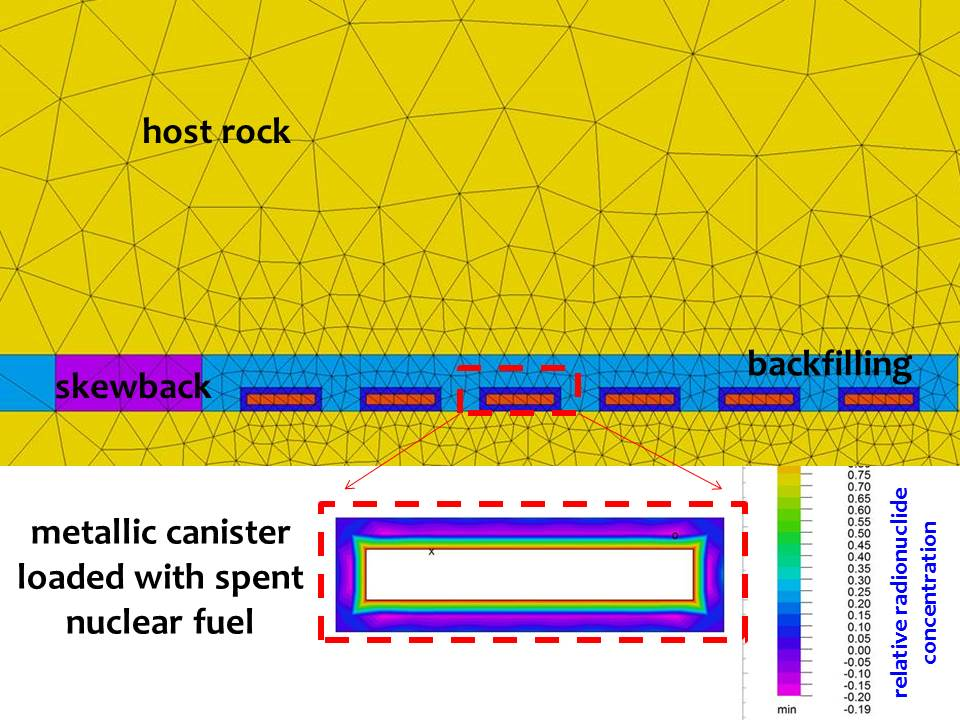Reactive transport modelling
Numerical modelling is a key tool in geosciences and hydrology which can identify and quantify both, individual and multiple coupled processes. In particular, reactive transport models are powerful tools that simulate coupled processes and reactions (groundwater flow, transport of solutes, and complex geochemical reactions between solid and aqueous phases). Numerically speaking, this means, that reactive transport modelling can provide quantitative evaluation for the performance of a radioactive waste disposal facility, identifying the key physico-chemical processes that contribute to the long-term safety of the facility.
The expertise and main activities of the reactive transport modelling group are focused on development and application of conceptual and numerical models on:
- Radionuclides and contaminants migration studies in porous and fractured media in repository and laboratory scale.
- Temporal hydro-geochemical evolution of the multi-barrier system, i.e. alteration / degradation of (geo-)technical and geological barriers (waste form dissolution, Fe-canister corrosion, interactions at interfaces of backfilling material / concrete / adjacent host rock).
The specific strength of our group is the geochemical and thermodynamic part of the simulation using different activity models for aqueous speciation (Davies, SIT, PITZER equations), surface complexation (electrostatic and non-electrostatic), kinetics and precipitation and co-precipitation models.
Depending on the studied system, different tools and techniques are used to model and characterize the above mentioned processes. The well-known specialized codes we are using include COMSOL Multiphysics, PHREEQC, PHAST, and Geochemist's Workbench. Additionally, the interface iCP, which couples COMSOL and PHREEQC, is used, taking advantage that KIT-INE is part of the consortium where this tool has been developed. Coupling between simulation codes and external optimization parameter estimation and uncertainty analysis routines (PEST, PHREEPLOT) is also used.
Due to the interdisciplinary approach applied in the simulations, there is a strong collaboration with other groups of KIT-INE as well as with external research institutes, universities and companies. Of particular importance is to incorporate the experimental knowledge and mechanistic understanding generated at different scales (i.e. field and laboratory) in the Geochemistry and Radiochemistry departments of KIT-INE and the continuous interchange of ideas with software developers.
Contact:
+49 721 608 28078


